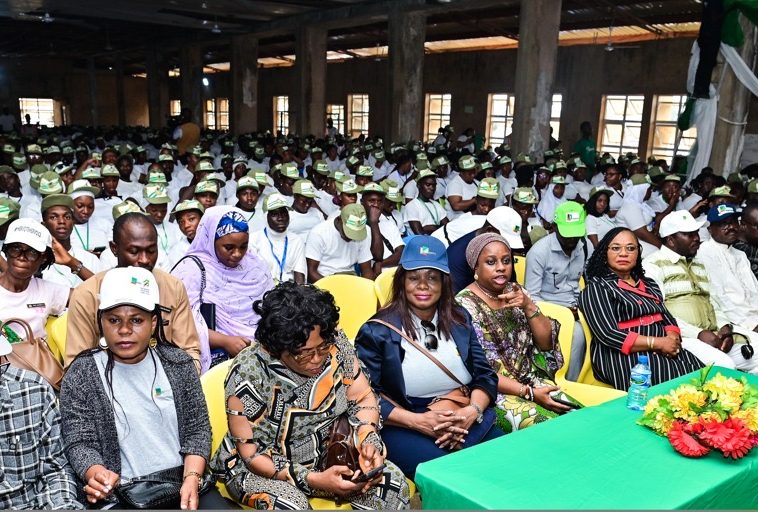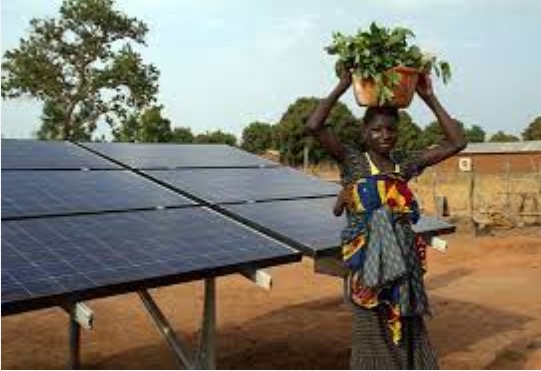To save the earth and make it habitable for mankind, the world is shifting towards clean or renewable energy that does not produce any kind of pollution or have adverse effects on the environment.
Continents and nations are now making strategic efforts to reduce their dependence on conventional energy sources like oil, coal, and natural gas.
Not to be left behind in this new revolution, the African continent is also putting its best together to make the best use of resources available at its disposal to address issues of climate change and save the earth.
This write-up brings to the fore some of the major renewable energy initiatives available in Africa that are expected to serve as the foundation for Africa’s green revolution of clean energy.
According to statistics from the United Nations, affordable electricity from renewable energy sources is capable of providing about 65 percent of the world’s total electricity supply by 2030 and could decarbonise 90 percent of the power sector by 2050, thereby cutting carbon emissions and mitigating climate change.
Other than the need to save the earth,
Africa is exploring its available renewable energy resources like solar, wind, and minerals such as lithium and cobalt to provide electricity, create jobs, and enhance industrialization on the continent.
As a result of this, Africa is ambitious with its clean energy plans and has set targets. For instance, the Economic Community of West African States (ECOWAS) has a target for 48% renewable electricity by 2030, while the East African Community aims to achieve 21% renewables in the power generation mix by 2038.
With the various targets, the stakes have risen, and nations on the continent are striving to get it right both individually and as a body, as Africa has now turned to making the best use of the abundant renewable energy resources available at its disposal.
On an individual country basis, African countries are not relenting. For instance, Morocco boasts one of the world’s largest solar power plants, the Noor Quarzazate Solar Power Station, which delivers 24-hour energy. The concentrated solar plant allows Morocco to provide almost half of its energy mix from renewable sources.
Kenya currently enjoys power from its Lake Turkana Wind Farm, which produces 310 MW of reliable, low-cost energy and ranks as the largest wind power project on the continent.
Elsewhere in Egypt, the north African country has already completed a 262.5 MW renewable energy independent power producer project, which is the Gulf of Suez I-Ras GharebWind Energy wind farm, and the government is presently working with relevant stakeholders for a new 500 MW wind farm project to be delivered in 2025.
The new wind farm, which will provide power to over 800,000 homes in Egypt, is projected to have an average annual production capacity of more than 2,300 GWh.
In terms of solar energy, there are several of them spread across African countries, like the Botswana-Nigeria solar project, projected to serve the two countries with clean energy beginning in 2030 and also expected to reduce around 6.5 million tonnes of carbon emissions per year.
There is also the 1650 MW Benban solar park in Egypt, the Aman and Project Nour initiatives in Mauritania, the Amun project in Morocco, and the De AAR project in South Africa, among others.
At the subregional level, countries in the east and southern parts of Africa have also come up with the Africa Clean Energy Corridor, which seeks to accelerate the development of renewable energy potential as well as cross-border trade of renewable power within the Eastern Africa Power Pool and Southern African Power Pool.
The initiative seeks to create large, competitive renewable energy markets with the long-term goal of reducing the production costs of such energy. Through this, the Corridor would be capable of attracting investments into the eastern and southern African subregions and meeting 40 to 50 percent of its energy needs.
Another remarkable regional initiative towards clean energy is the Regional Emergency Solar Power Intervention Project (RESPITE), which kicked off in January 2023 to increase electricity access for the people of Liberia, Sierra Leone, Togo, and Chad. The $311 million project is focused on increasing grid-connected renewable energy capacity as well as enhancing regional integration among the countries in terms of embracing clean energy.
Among other things, the project will finance the installation and operation of 106 megawatts of solar photovoltaic power with batteries and storage systems and a 41 megawattexpansion of hydroelectric power capacity, all with the expectation of reducing greenhouse gas emissions across the four designated countries.
RESPITE offers a more sustainable and affordable solution to a cleaner energy sector and will pave the way for the ambitious expansion of clean energy generation in the future in West Africa.
Also, collectively as a continent, many cleaner energy initiatives are being considered. Among them is the Africa Renewable Energy Manufacturing Initiative to drive investment and mobilise action in African countries for enhanced renewable energy manufacturing capabilities.
This initiative will focus on issues such as capacity building, knowledge transfer, policy dialogues, and advocacy and is projected to create 14 million jobs and contribute 6.4% to GDP growth on the continent.
Over the years, the high cost of financing has been a barrier to renewable energy, but to overcome this, alongside its collective efforts as a continent, Africa is also collaborating with developed nations and other relevant international agencies to actualize the goal of getting cleaner energy available on the continent.
One such collaboration was recently signed at the first Africa Climate Summit held in Kenya, where the International Renewable Energy Agency (IRENA), in collaboration with Denmark, Germany, the United Arab Emirates, and some African countries, founded a new partnership on boosting renewable energy in Africa.
African countries involved in the partnership, tagged the Accelerated Partnership for Renewables in Africa (APRA), include Kenya, Ethiopia, Namibia, Rwanda, Sierra Leone, and Zimbabwe.
The essence of the partnership is to mobilise finance, provide technical assistance, and engage the private sector for amplified efforts on effective green energy strategies for Africa.
With the efforts being put into the renewable energy revolution across Africa at the moment, no doubt, there will be no going back; rather, every other option for the advancement of cleaner energy will be explored.
In lieu of the aforementioned commitments and actions, the International Renewable Energy Agency is optimistic that, with the due implementation of the right policies, good governance, and access to financial markets, Africa is likely to meet up to 67 percent of its clean energy needs by 2030 through solar, wind, hydropower, geothermal, and other renewable sources.


